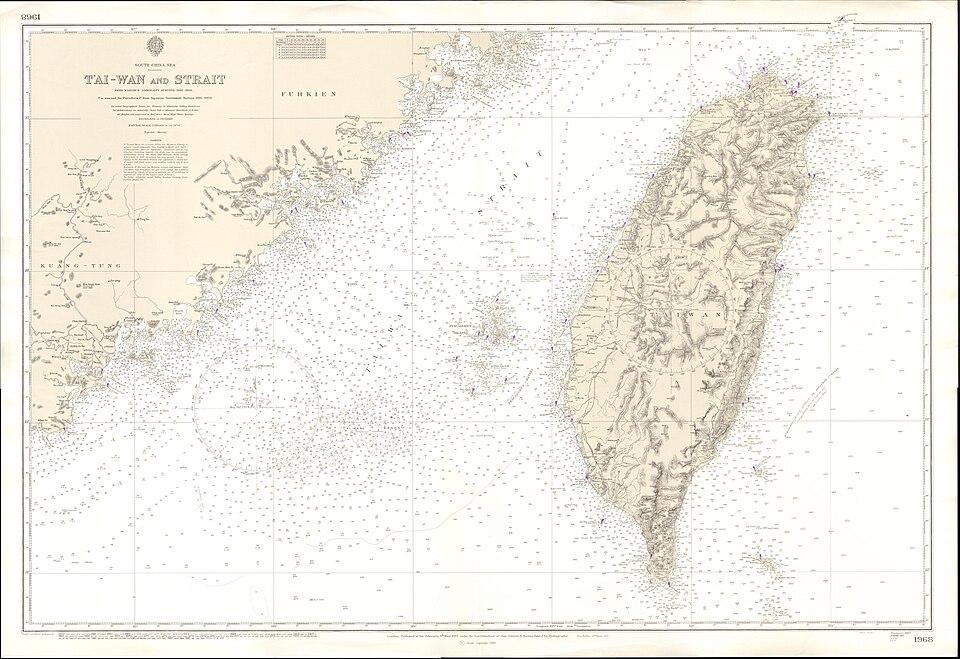While Taiwan features frequently in Australian strategic and policy discussion and media discourse, overall understanding in Australia’s national life of the implications of a crisis in the Taiwan Strait remains limited. This is the central finding of the report Australian Public and Institutional Responses to a Taiwan Strait Crisis. Across government, business, and civil society, there is an abundance of commentary and a degree of awareness about possible risks, but the depth of knowledge required to inform effective planning and preparedness is uneven.
Deepening knowledge of Taiwan and raising understanding of a possible Taiwan Strait crisis is part of strengthening Australia’s security, resilience and social cohesion in an era of geostrategic competition.
The picture is not without complexity. Some large corporations maintain risk management and resilience teams that have examined the likely consequences of a major disruption in the Taiwan Strait for the Australian economy and financial system. Within the Commonwealth public sector, several agencies contain staff with strong regional awareness and analytical capacity. In particular states and local governments contexts, engagement with Taiwan has been more substantive, and individuals have undertaken assessments of specific supply-chain dependencies and regional economic implications. One local government has developed a long-term strategic partnership with Taiwan that could serve as a model for others. The national experience of risk coordination developed during the COVID-19 pandemic has also produced a basic vocabulary of risk and preparedness that could be adapted to other contingencies.
These strengths are exceptions rather than common practice. Across most states and local councils, as well as among small and medium-sized enterprises, awareness of potential regional instability is not matched by systematic risk assessment or scenario planning. Decision-making across the nation relies heavily on narrow vectors of information and advice from agencies in Canberra, and within the federal system there are divergent interpretations of risk—ranging from confidence that deterrence will hold to assumptions that a crisis is likely within the decade. Were an event to occur in the Taiwan Strait that crosses the threshold of a crisis, these differences could translate into inconsistent public messaging or policy response.
Public debate, meanwhile, has tended to reinforce conceptual limits rather than expand them. Most dominant of these is framing a Taiwan contingency as a test of the United States alliance, crystallised in the recurrent question of whether Australia would join the United States in “a war with China over Taiwan”. When viewed solely through this alliance lens, other dimensions of a potential crisis—economic, social, and humanitarian—receive little attention. Debate often becomes entangled with broader arguments about AUKUS, defence expenditure, and strategic alignment, rather than addressing the practical realities of crisis management and resilience planning.
A related distortion mirrors the alliance fixation by situating Taiwan primarily within the narrative of China’s rise and occluding the Taiwanese perspective. For some observers, Chinese threats to Taiwan exemplify the broader risks of authoritarian regional hegemony. For others, who associate China with economic opportunity, Taiwan’s resistance to coercion is depicted as a source of instability and a potential threat to prosperity. Broadly, Beijing’s threats against Taiwan have long been rationalised and even moralised as part of Australia’s security landscape. Responsibility for maintaining peace is often displaced onto Taipei, and its exclusion from the international system becomes not a denial of Taiwanese self-determination but the necessary price of maintaining regional order. Such ideas are not universal, but they remain influential in shaping how the Australian public and some policy circles conceptualise Taiwan.
As assessed by the report, unexamined assumptions about China or the US do not dictate day-to-day business or sub-national decision-making, but they narrow the conceptual field from which policy responses emerge. Policymakers, analysts, and business leaders often lack empirically grounded frameworks through which to evaluate Taiwan’s domestic politics, economy, and society. In this vacuum, inherited assumptions about China and the United States dominate, leaving little room for approaches that treat Taiwan as an autonomous subject of policy.
Universities could, in principle, help bridge the gap between policy debate, public understanding, and regional knowledge. In practice, Australian universities have limited expertise on Taiwan and, in many cases, adopt ambiguous institutional attitudes toward how a Taiwan crisis might affect them. Taiwan studies are undertaken by just a handful of academic specialists, and cross-Strait analysis is often subsumed under broader “China studies” frameworks. Institutions have only minimal awareness of the distinctions between Chinese and Taiwanese student cohorts or the sensitivities that may arise between them. This underdevelopment matters because universities play a key role in shaping public knowledge and producing the expertise that informs government, business, and the media.
At the community level, it is Taiwanese-Australians who would experience a Taiwan Strait crisis most directly. These communities, diverse in background and outlook, generally report convivial relationships in workplaces and neighbourhoods. Many Taiwanese-Australians navigate complex interactions with Chinese-Australian communities with care, often avoiding discussions of politics or identity in everyday life. However, they also describe a recurring sense of being overlooked by government and the media. The need to clarify or defend their Taiwanese identity within institutional settings generates frustration and fatigue. These communities possess the most detailed knowledge of Taiwan’s society, economy, and evolving cross-Strait dynamics. Their insights can help distinguish between routine developments and significant shifts that warrant policy attention. Governments, universities, and the media would benefit from regular and structured forms of engagement that draw on this experience while avoiding politicisation or undue pressure on community members.
Beijing continues to escalate its military activity in the Taiwan Strait, engage in cognitive warfare against the Taiwanese and use highly belligerent language about so-called “reunification”. Understanding a Taiwan Strait crisis means placing Beijing’s responsibility and Taiwan’s agency at the centre of understanding and analysis. In the event of military action, depending on how the United States and regional actors respond, alliance considerations for Australia would be unavoidable, but they will be secondary to the economic and social repercussions. Australia’s deep integration with Northeast Asian economies, including Taiwan, Japan, South Korea, and China, means that major disruption in the Taiwan Strait would affect trade flows, manufacturing supply chains, energy security, and financial markets. Local Chinese and Taiwanese communities would be beset with tensions that would affect social cohesion. A Taiwan crisis would therefore constitute a whole-of-nation challenge, rather than a purely strategic one.
Australia should move beyond rhetorical framings and strengthen practical understanding at all levels of government, business, and society. This involves recognising Taiwan as a distinct political and economic entity, broadening contingency planning beyond alliance scenarios, improving regional literacy where operational responsibilities reside, and incorporating the perspectives of Taiwanese-Australian communities into preparedness efforts. Doing so will not remove the risks of crisis, but it will reduce confusion and improve the quality of decision-making should events unfold quickly.
Mark Harrison is a senior lecturer in Chinese Studies at the University of Tasmania. He is also a Founding Fellow of the Australian Centre on China in the World and an Expert Associate of the National Security College at the Australian National University.
This article is published under a Creative Commons License and may be republished with attribution.





